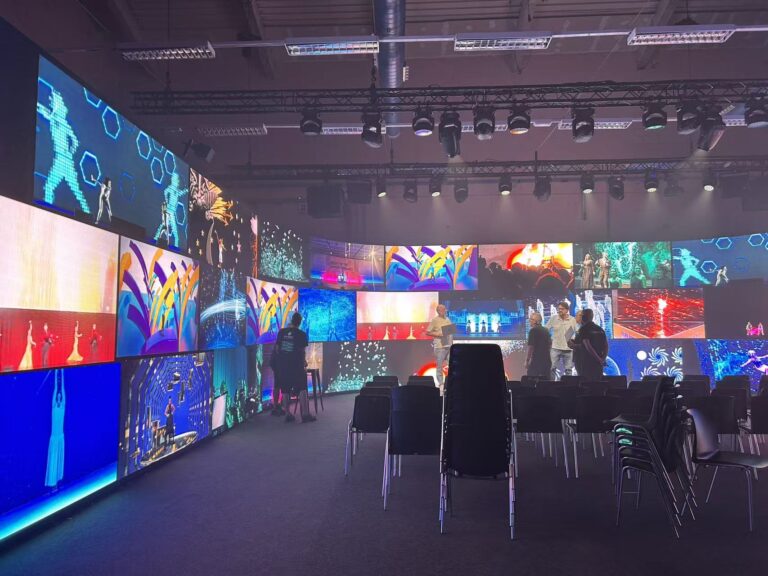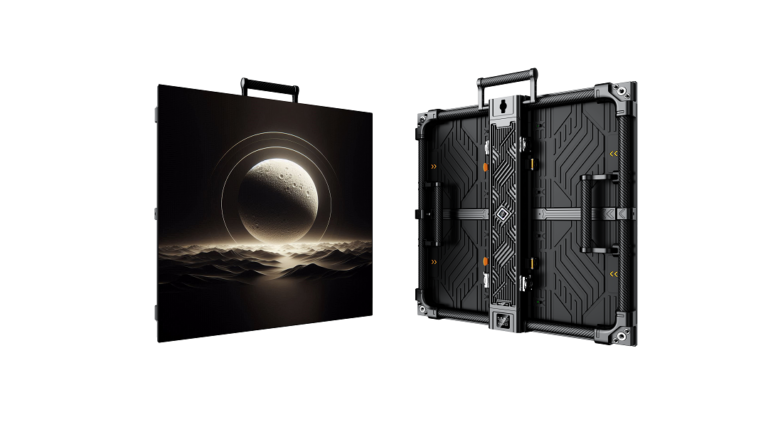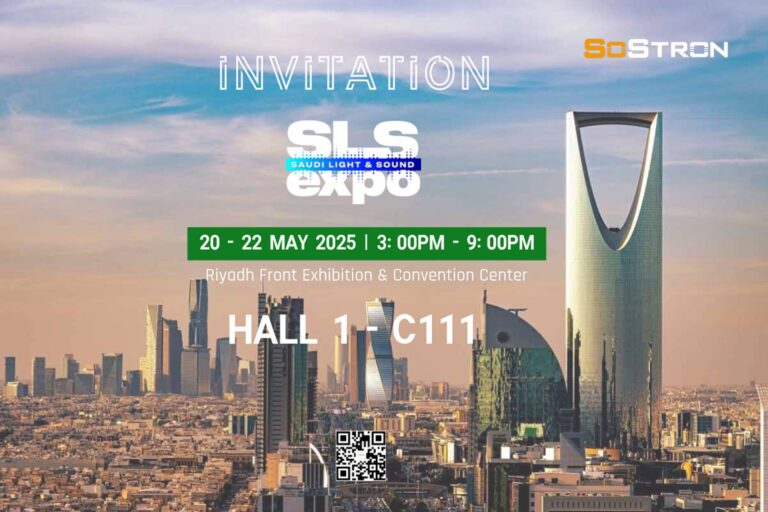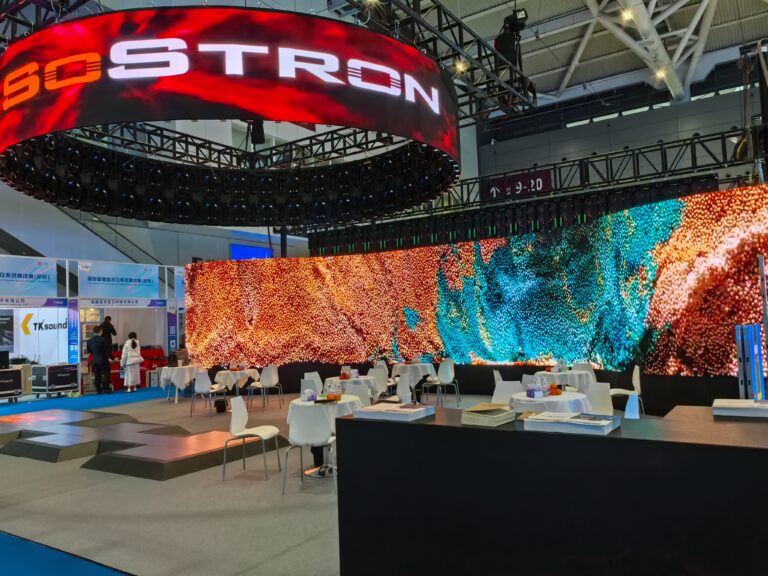Contents
-
Definition and Principles of LED Transparent Screens
-
Differences from Traditional LED Displays
-
Core Factors Affecting LED Transparent Screen Prices
-
Advanced Considerations
-
A Visual Magnet for Commercial Displays
-
How to Get the Most Cost-effective LED Transparent Screen
-
How to Achieve High Returns on LED Transparent Screen Investment with a Reasonable Budget
Imagine a glass curtain wall that not only allows sunlight to pass through but can also display vibrant visuals like a giant HD TV—cool, right? That’s the magic of LED transparent screens. Simply put, an LED transparent screen is a new type of LED display technology that retains a certain level of transparency like glass while being able to display dynamic images and videos. It’s like an “invisible” display that delivers rich visual content without obstructing the view behind it.
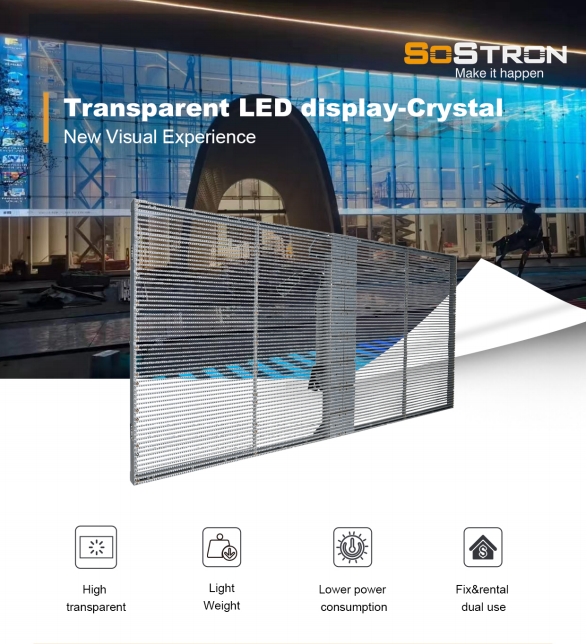
1. Definition and Principles of LED Transparent Screens
The core of LED transparent screens lies in their special light bar design and driving methods. Traditional LED displays arrange LED lamp beads densely on opaque PCB boards to create a full image. In contrast, LED transparent screens use innovative side-lighting technology and hollow-out designs to drastically reduce structural visual obstruction.
Basic principles include:
-
Miniaturized LED lamp beads with special encapsulation: Utilizes ultra-small SMD (Surface Mounted Device) LED beads with transparent encapsulation to minimize their blocking area.
-
Custom light bar design: LED beads are mounted on narrow, transparent, or specially processed PCB light bars with significant gaps in between.
-
Optimized driver IC and control systems: Specialized driver ICs and control systems ensure smooth and high-quality image display even with sparse LED arrangements.
-
Angled or dot-matrix layouts: Some screens adopt slanted or matrix-style layouts to further enhance transparency.
These clever designs allow LED transparent screens to deliver impressive visuals while preserving the see-through effect of glass.
2. Differences from Traditional LED Displays
| Feature | LED Transparent Screen | Traditional LED Display |
|---|---|---|
| Transparency | High (usually between 50%-90%) | Low (almost opaque) |
| Appearance | Lightweight, invisible, minimal visual impact | Heavy and opaque, highly visible |
| Installation Options | Flexible: hanging, adhesive, embedded, etc. | Mostly fixed installations |
| Application Scenarios | Glass facades, shop windows, stage design, creative displays | Outdoor billboards, indoor large screens, stadiums |
| Maintenance | Front or rear; some models are user-friendly | Primarily rear maintenance |
| Heat Dissipation | Natural cooling; higher structural design demands | Requires fans or AC support |
| Cost | Relatively high | Relatively low |
3. Core Factors Affecting LED Transparent Screen Prices
Understanding the following factors can help you make smarter budgeting decisions:
-
Pixel Pitch (P Value) and Resolution: Pixel pitch refers to the distance between adjacent LED beads. A smaller P value means higher density, higher resolution, finer image, closer viewing distance, and higher cost (e.g., P2.5 is more expensive than P10).
-
Brightness, Transparency, and Usage Environment: Higher brightness is needed for outdoor visibility under sunlight, which increases costs. Higher transparency requires more advanced tech and materials, also increasing the price.
-
Control System and Driver IC: Superior control systems and driver ICs ensure image stability, color accuracy, and grayscale, directly impacting performance and longevity.
-
Installation Structure and Difficulty: Different installations (hanging, wall-mounted, custom shapes) require varying levels of structural design and labor, affecting costs.
-
Brand and After-sales Service: Well-known brands often offer better R&D, quality, and support, which reflects in the pricing.
-
Material Costs: The price of core materials like LED beads, driver ICs, and PCB boards also affects the final cost.
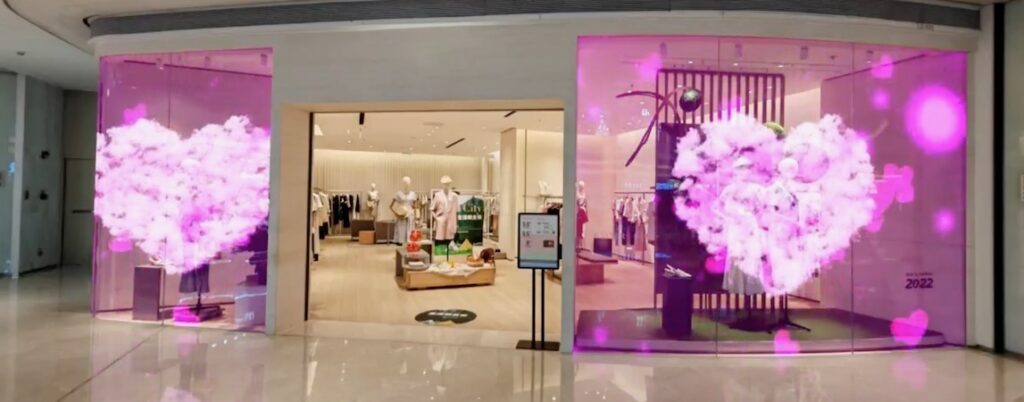
Price Range Reference
The price of LED transparent screens varies significantly depending on the model, pixel pitch, and configuration:
| Model | Application | Price Range (per m²) |
|---|---|---|
| P2.5 (Indoor) | High-end retail | $700 – $1500 |
| P3 (Indoor) | Retail displays | $540 – $1200 |
| P4 (Indoor) | Medium-scale projects | $450 – $900 |
| P6 (Outdoor) | Building facades | $600 – $1200 |
| P10 (Outdoor) | Large advertisements | $200 – $500 |
Note: Actual prices are influenced by brand, configuration, and project complexity. It is advisable to request quotes from multiple suppliers to secure the best deal.
4. Advanced Considerations
When purchasing an LED transparent screen, beyond the basic specs and price, consider:
-
Special Functions Needed? (e.g., Interactivity, Custom Shapes)
-
Interactive features: Some screens offer touch or gesture interactivity for enhanced engagement—these require extra hardware and software investment.
-
Custom shapes: Creative design needs may call for arc, round, triangular, or other shapes—these are technically demanding and costlier.
-
-
Environmental Factors:
-
High brightness for outdoors: Bright environments demand higher brightness screens, which increases component costs.
-
Protection rating: Outdoor screens require water- and dust-proofing (IP-rated), adding to material and process costs.
-
5. A Visual Magnet for Commercial Displays

Retail Shop Windows:
Shopfront transparent screens require high transparency to maintain indoor lighting while displaying brand visuals. Pixel pitch (typically P3–P6) depends on window size and viewing distance. Cost factors include screen size, brightness, pixel pitch, and whether custom shapes are required. Returns come from increased foot traffic, brand image boost, and higher sales.

Shopping Mall Atriums:
Large-scale transparent screens serve as attention-grabbing visuals for events and advertisements. Pricing varies by size, pixel pitch (P5–P10), brightness, and installation method. Returns include enhanced mall branding, more advertising interest, and better event performance.
Exhibitions and Displays:
Emphasize creativity and interaction. Budgets must cover custom shapes, interactivity, screen size, pixel pitch, and installation/content costs. Returns come from increased booth engagement, efficient information delivery, and audience participation.

Stage Art Backgrounds:
-
Rental Market: Requires lightweight, portable, flexible screens for various stage setups. Rental cost depends on size, pixel pitch, rental duration, and tech support.
-
Permanent Installation: Theaters or studios may install screens for immersive visuals. Long-term investment includes quality, stability, maintenance, and potential future upgrades.
6. How to Get the Most Cost-effective LED Transparent Screen
Quoting and Comparison Tips
-
Clarify Needs: Define pixel pitch, brightness, size, and installation environment to avoid irrelevant quotes.
-
Compare Suppliers: Request detailed quotes from at least three vendors, comparing modules, control systems, and after-sales policies.
-
Beware of Low-price Traps: Extremely low prices may indicate poor-quality components—prioritize performance and reliability.
Effective Communication with Suppliers
-
Learn the Background: Ask for case studies and experience; choose companies with proven projects.
-
Share Your Budget: Let suppliers know your budget and goals so they can tailor solutions accordingly.
-
Seek Discounts: For large or long-term orders, negotiate for volume discounts or installment options.

7. How to Achieve High Returns on LED Transparent Screen Investment with a Reasonable Budget
As an emerging display technology, LED transparent screens are showing great potential across industries thanks to their unique advantages. By understanding their definition, working principles, differences from traditional displays, and price-driving factors—and by aligning with specific application scenarios and budget planning—you can make a wiser investment.
Remember, the most cost-effective screen is not the cheapest one, but the one that meets your needs within your budget, offers reliable quality, and comes with excellent after-sales service. With thorough market research, clear requirements, and effective supplier communication, you’re sure to find the ideal LED transparent screen solution that delivers high ROI.


